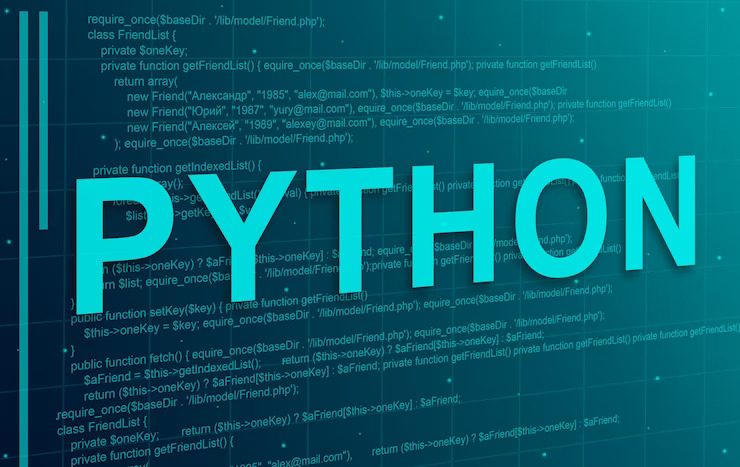
by jsendak | Oct 16, 2024 | DS Articles

Coral reefs are critical ecosystems on the brink of extinction. Today’s artificial intelligence (AI) and advancements in machine learning have enabled experts to identify, monitor and predict coral health. How do they achieve this? They listen. The coral reef soundscape As one of the most biodiverse ecosystems in the world, it’s little wonder coral reefs… Read More »How machine learning helps save coral reefs — by listening
The Vital Role of Artificial Intelligence in Preserving Coral Reefs
One of the most pressing environmental concerns today is the preservation of our world’s coral reefs, ecosystems teetering on the brink of extinction. They are a key factor in maintaining the health of our oceans, support countless species, and contribute to the survival of many coastal communities. With the current threats to these environments, including climate change, ocean acidification, and pollution, finding innovative ways to protect and restore them is of the utmost importance. One such innovative method is the application of artificial intelligence (AI) and machine learning, a tech-based solution that presents significant promise for the future of coral reef conservation.
AI and Machine Learning: A Revolutionary Approach
Present-day advancements in AI and machine learning have empowered experts in the field of conservation to accurately identify, monitor, and predict coral reef health. The methodology behind this technological application is astoundingly intuitive—they listen.
The Coral Reef Soundscape
As one of the most biodiverse ecosystems in the world, the sonic environment, or ‘soundscape,’ of coral reefs are brimming with information. This natural symphony is a critical indicator of reef health, and now, thanks to advanced technologies such as AI, scientists can analyze these soundscapes to predict and monitor the health of these critical ecosystems.
The Future of Coral Reef Conservation
With such an innovative and promising approach at humanity’s disposal, great strides in reef conservation seem feasible. However, the successful implementation of AI in this sphere, as with any technology, comes with its own unique set of challenges and considerations.
Long-Term Implication and Future Developments
Despite these potential hurdles, the long-term implications of AI are undeniably promising. In the future, we can expect the scale and precision of AI-powered coral reef analysis to improve greatly. Enhanced AI capabilities can enable more effective monitoring of large expanses of ocean waters, not currently feasible with human-led initiatives.
There are also ample opportunities for the development of more sophisticated predictive models. AI may advance to the point where it could warn us of pending threats to the reefs, providing us ample time to take preventative action. This predictive ability can be a game-changer in protecting our oceans.
Actionable Advice based on these Insights
- Invest in Technology: Stakeholders invested in environmental conservation should consider supporting initiatives that focus on the use of AI for coral reef conservation.
- Promote AI Research: Encourage and fund the research into more advanced AI algorithms and machine learning models that can deliver better predictive capabilities for coral reef health.
- Engage in Legislation: Lobbying for laws that promote the use of AI in environmental protection could be crucial in encouraging government investment and attention.
- Educational Initiatives: Fostering understanding and appreciation of coral reefs in communities can lead to more widespread support for conservation efforts, including those involving AI applications.
Read the original article

by jsendak | Oct 15, 2024 | DS Articles
This guide emphasizes the growing significance of GenAI but also highlights the crucial role that data scientists play in harnessing this technology to solve real-world problems.
Understanding the Impact of GenAI and the Role of Data Scientists
Data science and AI continue to revolutionize various industries, creating the need for us to understand their potential impact and projections for future developments. In this context, our focus lies on Genetic Algorithms (GenAI) and the significant role held by data scientists in leveraging this technology to solve complex, real-world issues. Before tackling the further implications, let’s take a brief outlook at GenAI.
Understanding GenAI
Genetic Algorithms (GenAI) are inspired by the process of natural selection, implementing the same principles in its operations. GenAI evolves solutions to problems by replicating Darwinian principles of survival of the fittest in machine learning algorithms. It manipulates the variables of a particular problem to arrive at the most optimal or ‘fittest’ solution.
GenAI: Long-Term Implications and Future Developments
While the continued development and adoption of GenAI are promising, here are a few long-term implications and potential future advancements in the field.
- Enhanced Accuracy of Machine Learning Models: GenAI offers optimised solutions decreasing the risk of errors, enhancing the accuracy of machine learning models. Therefore, it can benefit sectors such as finance, healthcare, and logistics that rely heavily on accurate predictions and forecasts.
- Improvement in Decision-Making Processes: Businesses can greatly benefit from GenAI as it could improve the process of decision making. Algorithms can deal with large volumes of data, providing informed suggestions based on trends and analytics.
- Solving Complex Problems: With the further advancement of GenAI, it could provide solutions to more complex problems across diverse fields. This includes improving traffic flow, predicting weather, and managing resources.
The Crucial Role of Data Scientists in Harnessing GenAI
The unfolding convergence of AI and Data science has proven that data scientists are pivotal to a successful adoption of GenAI. Their roles cover a wide range of tasks including designing and implementing algorithms, manipulating large datasets, interpreting and analyzing results – all guided by their deep understanding of both the problem and potential of GenAI.
Actionable Advice for Embracing GenAI
“The only way to predict the future is to have the power to shape it.” – Eric Hoffer
For companies hoping to adopt GenAI, it’s advisable to invest in hiring or training existing employees to understand GenAI. Furthermore, organizations should constantly educate themselves about this rapidly evolving technology to stay ahead of the competition.
Lastly, data scientists should consider delving more into GenAI and expand their skill set. This will not only open new avenues for them in their career but also aid in the advancement of GenAI.
In Conclusion
GenAI is a promising technology that has the potential to solve complex real-world problems. The crucial role that data scientists play in realizing this potential cannot be understated. By fully understanding and embracing this technology, companies and data scientists can play a part in steering the future towards an era of intelligent problem solving.
Read the original article

by jsendak | Oct 12, 2024 | DS Articles

Want to turn images into text effortlessly? Explore our Python tips and simple methods to boost your text extraction skills today.
Exploring Python for Text Extraction: Long-Term Implications and Future Developments
If you know your way around Python, you can exploit its powerful library and versatile functions to perform various tasks. One such task is text extraction from images. This can have revolutionary implications, especially in the field of data mining, natural language processing, image recognition and archiving.
The Power of Python in Text Extraction
The text introduces Python as a tool to turn images into text effortlessly. This process is usually called Optical Character Recognition (OCR).
Python boasts impressive libraries such as Tesseract and Pytesseract which are specifically designed for OCR tasks. By using these tools, you can extract text from images, analyze it, and use it for further processes.
Potential Benefits and Applications
- Digitizing Printed Text: With Python-based OCR, you can digitalize printed documents without having to manually enter the data.
- Data Mining: Extracted text from images can be used for data mining and big data analysis.
- Machine Learning: Image to text conversion is vital in various machine learning applications, specifically in image recognition and natural language processing.
- Automated Archiving: Text extraction can be vital in archiving historical documents and creating searchable databases.
Long-Term Implications and Future Developments
As artificial intelligence continues to evolve, the role and capabilities of Python in text extraction are also set to enhance. With predictive analytics and natural language processing becoming increasingly prominent, Python’s role in text extraction could have transformative implications.
Implications
- Data Accessibility: Enhanced text extraction tools could make huge volumes of data accessible and available for analysis.
- Efficiency: Automation of time-consuming tasks like manual data entry can significantly enhance efficiency in various sectors.
Future Developments
Improvements in text extraction capabilities can bridge the gap between physical and digital data. With the advent of advanced machine learning models and the ever-growing big data, the possibility of highly accurate and fast image-to-text transformations looks promising.
Actionable Advice
If you aim to boost your text extraction skills, invest in learning and mastering Python. Given its dominant and growing role in text extraction and various AI applications, proficiency in Python could make you highly sought after in the technology industry.
Do not just learn the basics but aim to understand how various Python libraries like Tesseract and Pytesseract work. Keeping up-to-date with recent developments in Python libraries specific to OCR will also help you stay ahead in the field.
Read the original article

by jsendak | Oct 10, 2024 | DS Articles

Because of concept drift in machine learning, models built for forecasting will almost always experience drops in performance and accuracy over time. Can artificial intelligence engineers prevent it from happening? Discover how to address concept drift below. What is concept drift in machine learning? In machine learning, concept drift is a change in the relationship… Read More »How to address concept drift in machine learning
Long-term Implications and Future Developments of Concept Drift in Machine Learning
Concept drift is a significant factor in machine learning that plays a crucial part in the degradation of the performance and accuracy of forecasting models over time. By examining the implications of such changes, we can formulate viable solutions to this ongoing challenge and discuss potential future developments in this field.
The Impact of Concept Drift on Machine Learning
Over time, almost all machine learning models will undergo concept drift – a change in the underlying relationships that the models were originally designed to understand and predict. These changes inevitably lead to a reduction in model performance and accuracy. The failure to timely address and mitigate concept drift may significantly impair the effectiveness of various AI systems, specifically those that rely heavily on accurate forecasting.
Preventing Concept Drift in Machine Learning
While completely eliminating concept drift may not be achievable due to the inherent fluidity of the data world, there are strategies that AI engineers can use to mitigate its impact.
- Periodic Retraining of Models: Regularly updating and retraining your machine learning models can help to keep them current with any changes in the underlying concepts and relationships.
- Adaptive Learning: Implementing a system of adaptive learning, where the model can learn and adjust itself as data changes, can also be beneficial.
- Incorporating Feedback: Feedback from the model’s applications and results can help to adjust and refine how the model deals with changing concepts.
Future Developments
The field of machine learning is ever-evolving, and strides are being made to develop more advanced techniques for dealing with concept drift. These advances may involve creating more robust models that are better able to withstand changes, or developing new methods for updating models regularly and efficiently.
Actionable Advice
Concept drift will remain a pressing concern as long as the world of data continues to grow and evolve. AI engineers and other professionals in the field should ensure that they are staying current with the latest developments and techniques for addressing concept drift.
To this end, investing in continuous learning and training is advised. Providing updated training data to machine learning models and implementing systems in place for regular reassessments will be crucial for the longevity and reliability of any machine learning model. Furthermore, feedback should be actively sought and used to refine and enhance models continually.
Read the original article

by jsendak | Oct 9, 2024 | Cosmology & Computing

Exploring the Potential of Quantum Computing: A Paradigm Shift in Computing Technology
In the ever-evolving world of technology, quantum computing has emerged as a promising field that has the potential to revolutionize the way we process information. Unlike classical computers that rely on bits to store and process data, quantum computers utilize quantum bits, or qubits, which can exist in multiple states simultaneously. This unique characteristic allows quantum computers to perform complex calculations at an unprecedented speed, making them capable of solving problems that are currently beyond the reach of classical computers.
One of the most significant advantages of quantum computing lies in its ability to perform parallel computations. While classical computers process information sequentially, quantum computers can process multiple calculations simultaneously, thanks to a phenomenon known as superposition. This means that quantum computers have the potential to solve complex problems in a fraction of the time it would take a classical computer. For instance, tasks such as factoring large numbers, simulating molecular structures, or optimizing complex systems could be accomplished exponentially faster with quantum computing.
Another key feature of quantum computing is entanglement. In classical computing, bits are independent of each other, but in quantum computing, qubits can become entangled, meaning that the state of one qubit is dependent on the state of another, regardless of the distance between them. This property opens up new possibilities for secure communication and cryptography. Quantum encryption, for example, could provide an unbreakable method of transmitting sensitive information, as any attempt to intercept or tamper with the data would result in a change in the entangled state, thereby alerting the sender and receiver.
The potential applications of quantum computing are vast and diverse. In the field of medicine, for instance, quantum computers could revolutionize drug discovery by simulating the behavior of molecules and predicting their interactions with various substances. This could significantly accelerate the development of new drugs and treatments. In finance, quantum computing could be used to optimize investment portfolios, analyze market trends, and improve risk management strategies. Additionally, quantum computing could enhance artificial intelligence algorithms, leading to more advanced machine learning models and faster data analysis.
Despite its immense potential, quantum computing is still in its early stages of development. Building a reliable and scalable quantum computer is a complex and challenging task. Quantum systems are highly sensitive to external disturbances, making it difficult to maintain the delicate quantum states required for computation. Researchers are actively working on developing error correction techniques and improving qubit stability to overcome these challenges.
Nevertheless, significant progress has been made in recent years. Tech giants like IBM, Google, and Microsoft are investing heavily in quantum computing research and development. They have already built quantum computers with a few dozen qubits and are actively exploring ways to scale up the technology. Furthermore, governments and academic institutions worldwide are also investing in quantum research, recognizing its potential to drive innovation and solve complex problems.
In conclusion, quantum computing represents a paradigm shift in computing technology. Its ability to perform parallel computations and leverage the power of entanglement opens up new possibilities for solving complex problems and advancing various fields. While there are still significant challenges to overcome, the progress made so far indicates that quantum computing has the potential to revolutionize the way we process information, leading to a new era of technological advancements. As research and development continue, we can expect quantum computing to play a crucial role in shaping the future of technology.








